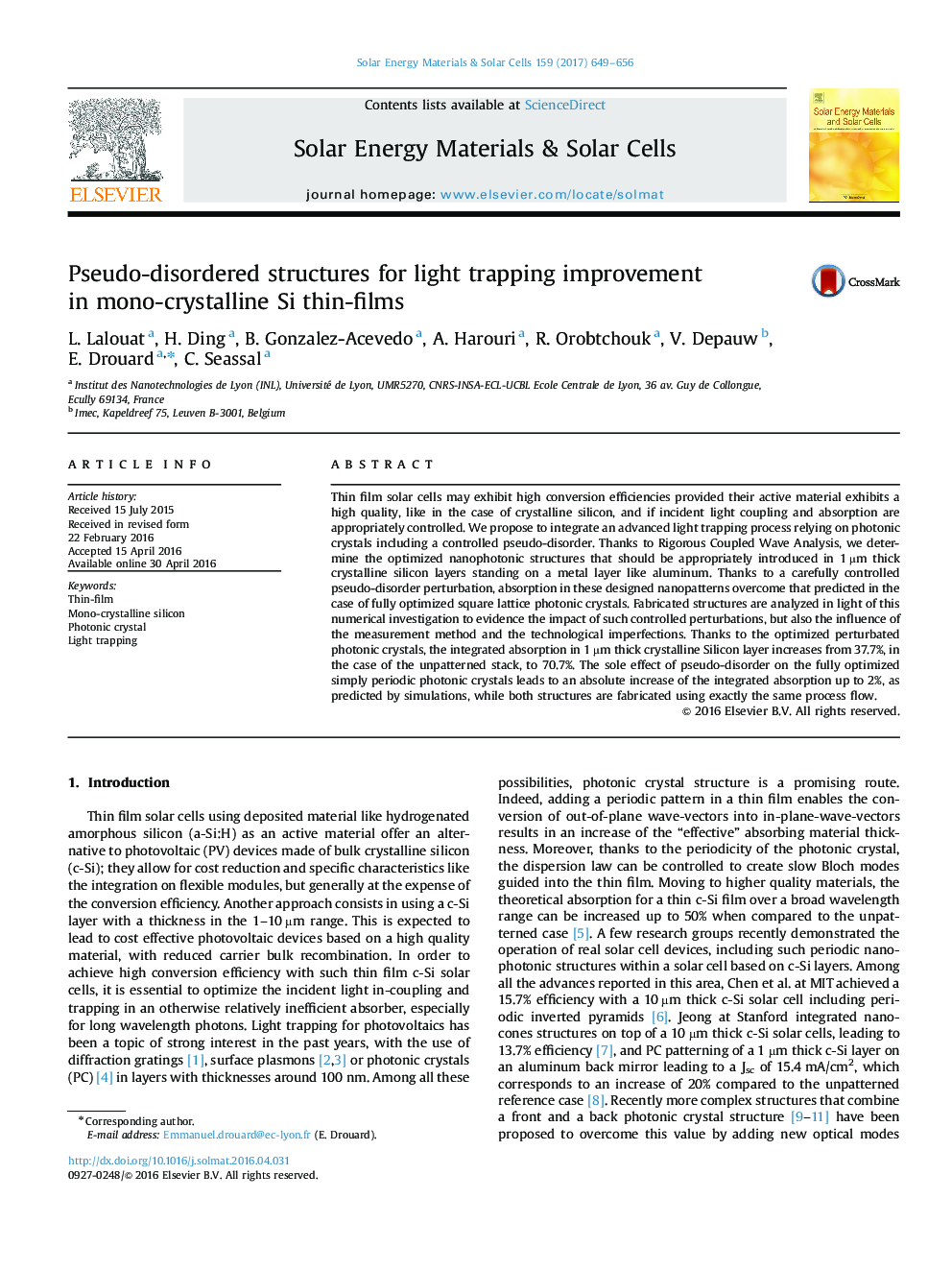| Article ID | Journal | Published Year | Pages | File Type |
|---|---|---|---|---|
| 6457618 | Solar Energy Materials and Solar Cells | 2017 | 8 Pages |
â¢We study the effect of a pseudo-disordered structure on the absorption of thin-film.â¢We numerically optimized the absorption of the pseudo-disordered structure.â¢The numerical results are supported by experimental one.â¢Pseudo-disordered nanostructure absorbs more light than optimized periodic one.
Thin film solar cells may exhibit high conversion efficiencies provided their active material exhibits a high quality, like in the case of crystalline silicon, and if incident light coupling and absorption are appropriately controlled. We propose to integrate an advanced light trapping process relying on photonic crystals including a controlled pseudo-disorder. Thanks to Rigorous Coupled Wave Analysis, we determine the optimized nanophotonic structures that should be appropriately introduced in 1 µm thick crystalline silicon layers standing on a metal layer like aluminum. Thanks to a carefully controlled pseudo-disorder perturbation, absorption in these designed nanopatterns overcome that predicted in the case of fully optimized square lattice photonic crystals. Fabricated structures are analyzed in light of this numerical investigation to evidence the impact of such controlled perturbations, but also the influence of the measurement method and the technological imperfections. Thanks to the optimized perturbated photonic crystals, the integrated absorption in 1 µm thick crystalline Silicon layer increases from 37.7%, in the case of the unpatterned stack, to 70.7%. The sole effect of pseudo-disorder on the fully optimized simply periodic photonic crystals leads to an absolute increase of the integrated absorption up to 2%, as predicted by simulations, while both structures are fabricated using exactly the same process flow.
